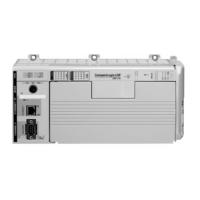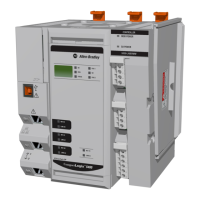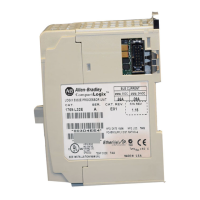Rockwell Automation Publication 1756-PM004D-EN-P - September 2012 19
Communicate with I/O Modules Chapter 1
Address I/O Data
I/O information is presented as a set of tags.
· Each tag uses a structure of data. The structure depends on the specific
features of the I/O module.
· The name of the tag is based on the location of the I/O module in the
system.
An I/O address follows this format:
When you add a module to the I/O Configuration
folder…
…the software automatically creates controller-
scoped tags for the module.
Location :Slot :Type .Member .SubMember .Bit
= Optional
Where Is
Location Network location
LOCAL = same chassis or DIN rail as the controller
ADAPTER_NAME = identifies remote communication adapter or bridge module
Slot Slot number of I/O module in its chassis or DIN rail
Type Type of data
I = input
O = output
C = configuration
S = status
Member Specific data from the I/O module; depends on what type of data the module can store.
·For a digital module, a Data member usually stores the input or output bit values.
·For an analog module, a Channel member (CH#) usually stores the data for a channel.
SubMember Specific data related to a Member.
Bit Specific point on a digital I/O module; depends on the size of the I/O module (0…31 for a 32-point module)

